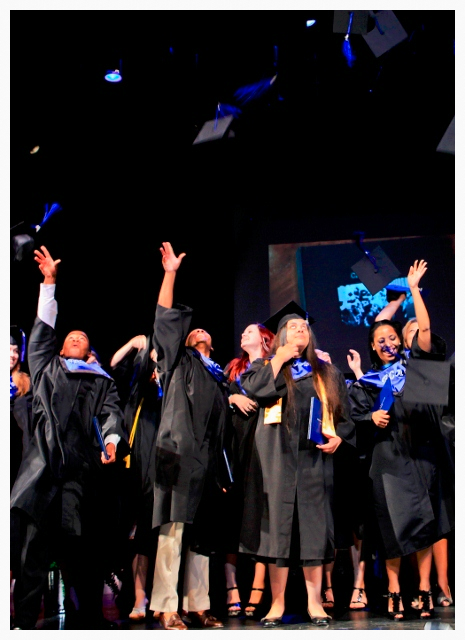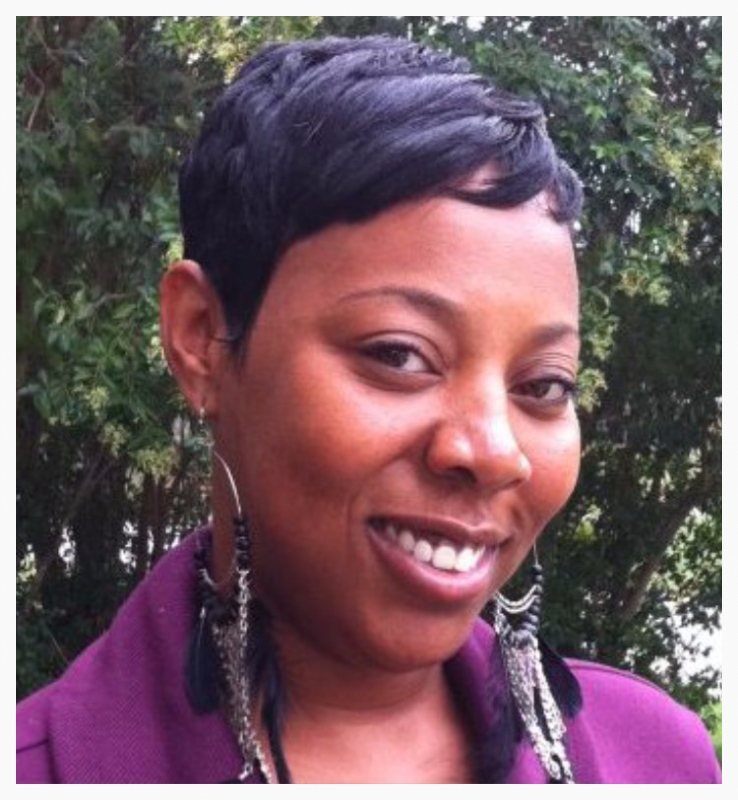|
| Rising teacher turnover impacts students |
Last year's teacher turnover rates released this month by the State Board of Education have been making headlines with one key data point: 14.84% of the state's teachers left their positions, the highest teacher turnover rate in 5 years.
To understand what this number really means for the future of our state, we have to look beyond the facts and figures at how higher teacher turnover impacts students, schools and districts:
- Students are more likely to be taught by a less experienced, less effective teacher.
- School climate suffers.
- Districts and the state spend money on recruiting and hiring new teachers that could otherwise be used for developing teachers and providing resources for kids.
Across North Carolina, school districts are working hard to identify innovative strategies to develop new teachers and leverage master teachers in order to reduce teacher turnover and improve teaching quality for their students. As the state's leaders define a path forward, strategies working across the country provide suggestions:
- Expanding the reach of effective teachers in Denver, CO
- Building teacher career ladders in Washington, DC
- Providing rigorous and relevant principal preparation in Florida
|
|
Network schools celebrated for 100% graduation
|
 Eleven school districts and 60 high schools this month were honored by State Superintendent June Atkinson for having the highest four-year cohort graduation rates among all districts and schools in the state in 2014-15. Nearly two-thirds of the high schools on the list of those graduating 100% of students are part of the NC New Schools/Breakthrough Learning network. Eleven school districts and 60 high schools this month were honored by State Superintendent June Atkinson for having the highest four-year cohort graduation rates among all districts and schools in the state in 2014-15. Nearly two-thirds of the high schools on the list of those graduating 100% of students are part of the NC New Schools/Breakthrough Learning network.
"I am so proud of the teachers, school counselors, coaches, principals and district leaders, and others who have worked tirelessly to make sure more students are graduating from North Carolina's public schools than ever before. Their dedication and tenacity enabled the state to reach the all-time high graduation rate of 85.6 in 2014-15," said State Superintendent June Atkinson. "As we honor the schools and districts that do an exceptional job keeping students in school and on track for graduation, I am hopeful that these award winners will continue to share best practices and serve as models for districts and schools across the state."
Read the full list of districts and schools...
|
|
Rediscovering teaching through learning
|

When Megan Bennett decided to return to teaching after a 6-year hiatus, she wanted to translate her love of biology and energy for students into a new experience in the classroom. She found just what she was looking for in an alternative licensure program focused on science, technology, engineering and mathematics (STEM) known as NC STEP -- the North Carolina STEM Teacher Education Program at NC New Schools/Breakthrough Learning.
Bennett, now in her second year as a teacher at Southern High School in Durham, brings new approaches to teaching that have re-invigorated and changed her classroom practice. She attributes her success to the support she's received from both NC STEP and her co-workers at the school.
"I felt like was learning how to teach all over again," Bennett says of her experience in NC STEP. "That was important because the old way of teaching in the 1990s was so different from teaching now. Before, I was more or less teaching to the test. The way I teach now -- where every student gets to read, write, think, talk in every class every day -- they will remember forever."
|
|
Planning for tech connections across the globe
|
 Technology can be a powerful tool for student engagement -- but only when it is incorporated purposefully and and thoughtfully.
In this month's Teacher's Edge, Instructional Coach Marquis Mason shares his experience co-planning with Chase High School social studies teacher Gregory Gallagher. Using a virtual platform called e-pals, Gallagher hoped to connect students in his Rutherford County classroom with their counterparts in South Korea to discuss the United States' involvement in the Korean War.
|
District Innovation Profile:
Rutherford expands services to middle schools |
With an early college high school and similar strategies in comprehensive high schools well underway, Rutherford County Schools is making great strides in improving access to high quality education for nearly 2,000 middle school students at Chase, East Rutherford and R-S Central Middle Schools and the Rutherford Opportunity Center (grades 6-12). Leadership coaches from NC New Schools/Breakthrough Learning are partnering with each of the middle school principals and instructional coaches collaborate with teachers to increase academic rigor and prepare all students for college and career readiness.
Rutherford first joined the network in 2005, opening Rutherford Early College High School (REaCH) on the campus of Isothermal Community College. The district has since expanded college-readiness strategies to include comprehensive high schools as part of the Rural Innovative Schools initiative and is now taking its "all means all" philosophy to the middle school level to ensure that every single student receives a high quality education, opportunities to take college course work at no cost and the appropriate supports to graduate from high school prepared for college, careers and life.
|
|
Study finds students underperform in schools with large black populations
|
A new federal study shows that both black and white students at schools with a high density of black students perform worse than those at schools with a lower density of black students.
The report, released last month by the National Center for Education Statistics, the research arm of the U.S. Department of Education, found that, on average, white students attended schools that were 9 percent black while black students attended schools that were 48 percent black.
Achievement was lower for both black and white students in schools where black students accounted for more than 40 percent of the student body, compared to schools where black students accounted for less than 20 percent of the student body.
Those findings weren't entirely unexpected. But what did surprise researchers was that the achievement gap for black students was largely due to the performance of black male students, not black female students. Black males actually did worse in schools with a high density of black students while white males did better, compared to schools with lower densities of black students.
"Even when we account for factors associated with higher achievement such as student socioeconomic status and other student, teacher, and school characteristics, we see that black male student achievement is lower in schools with higher percentages of black students," acting NCES Commissioner Peggy Carr told U.S. News & World Report.
|
- EducationNC featured Wake STEM Early College High School on its blog earlier this month in a post titled "A STEM school sets up students for success."
- The 2016 LGFCU Emerging Issues High School Prize for Innovation challenges teams of high school students to create innovative, exciting proposals for successfully encouraging volunteerism by high school-aged students, particularly those who are at-risk of dropping out. The grand prize winner will receive $5,000 for project implementation and up to five finalists will win $1,000 each. Applications will be accepted until Nov. 9, 2015.
- The Burroughs Wellcome Fund has called for proposals for the BWF Promoting Innovation in Science and Mathematics (PRISM) Grant Award. The award supports teaching professionals in their efforts to provide quality hands-on, inquiry-based activities for their students. This award provides up to $3,000 for one year to cover the cost of equipment, materials, and supplies. An additional $1,500 may be requested for professional development related to the implementation of new equipment or use of materials in the classroom. Awards are made to teaching professionals that hold a professional educator's license to teach in a North Carolina K-12 public school. The Request for Proposal application can be found here. Click here for details about submitting an application.
- The North Carolina Center for the Advancement of Teaching (NCCAT) has a range of professional development opportunities coming up, including several sessions focused on digital learning. Visit the NCCAT website for a complete schedule.
|
|
Stay connected with NC New Schools/Breakthrough Learning
|
|
|
Thanks for subscribing to INNOVATOR, an update on school and district transformation from NC New Schools/Breakthrough Learning. Our newsletter aims to inform practitioners, policy makers and friends of public education on innovation, workforce development, research and success stories from schools, districts and regions across the nation. Please contact us to provide feedback and suggest ideas.
|
|
|
 |
 |
|
|